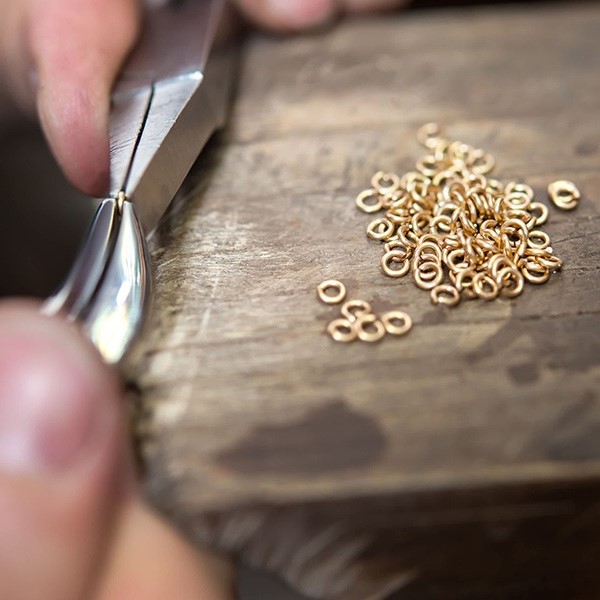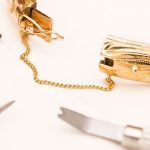When it comes to jewelry maintenance, knowing how to fix a necklace is an invaluable skill. Many people own necklaces that have become tangled, broken, or simply require a little TLC. This guide will explore various methods and techniques to restore your precious accessory, ensuring it can be worn with confidence once again.
Introduction
Jewelry plays a significant role in personal expression and fashion. However, it often suffers from wear and tear. Proper maintenance can prevent frequent issues and extend the life of your favorite pieces.
Significance of Jewelry Maintenance
Maintaining your jewelry is crucial for keeping it looking its best. Regular care prevents damage and preserves the beauty of your pieces. Learning to maintain your jewelry can save both time and money.
The Problem with Broken Necklace Chains
Broken necklace chains are a common issue for many jewelry owners. Such breaks can render a beloved item unwearable if not addressed. Becoming skilled in basic repair techniques can restore your jewelry’s functionality and aesthetics.
Assessing the Damage and Necessary Tools

When faced with a broken necklace, first understand the type of damage. This determines how you will approach the repair.
Identifying Types of Necklace Breaks
Necklace breaks can vary. Some common types include a clean snap where the chain has completely broken, or a more minor issue where the chain links are merely twisted or bent. Identifying the specific type of break is crucial as it influences the repair technique used.
Choosing the Right Tools for Necklace Repair
Selecting appropriate tools is essential for effective repair. Basic tools include pliers for bending or reshaping links, tweezers for manipulating small parts, and wire cutters for cutting metal if necessary. For more specialized repairs, such as soldering, you will need a soldering iron and some form of heat shielding, such as a heatproof mat. Ensure you have all necessary tools on hand before beginning your repair work.
Soldering to Repair a Broken Necklace Chain
Jewelry issues are common, but knowing how to solder can provide a lasting fix for your cherished necklace. Soldering is a reliable method for repairing metal chains, especially those made of silver or gold. With the right materials and steps, even beginners can achieve a sturdy repair.
Understanding the Soldering Process
Soldering involves melting a metal alloy to join two pieces of metal. This method is ideal for fixing broken necklace chains. You need a low-melting-point alloy, like silver solder, and a heat source, such as a soldering iron. The molten alloy, when cooled, forms a strong bond that reconnects the chain.
Soldering requires a steady hand and attention to detail. The process also demands cleanliness and precision, as dirty or misaligned parts won’t bond securely. It’s crucial to get this right to ensure the solder flows correctly and the repair holds.
Preparing the Necklace for Soldering
Before soldering a broken necklace, prep work is essential. Start by cleaning the break area to remove any dirt or oils. You can use a mild solvent or a soft brush to do this. The ends of the broken chain must align well to create a seamless repair.
Next, you’ll need to cut a piece of solder. Use a small amount, just enough to cover the area to be repaired. Apply flux to the break area, as this helps the solder adhere. Position the solder in place, making sure it touches both sides of the break.
The final step is heating the solder until it melts and flows to bond the broken ends. After the repair cools, clean any residue with a soft cloth to restore the necklace’s shine. With these steps, your broken necklace chain can look and function as good as new.
Wire Wrapping as an Alternative Fix

Wire wrapping is a savvy DIY fix for repair novices. It’s ideal when the necklace’s break is clean, and the two halves need reconnection without specialized tools.
Step-by-Step Guide to Wire Wrapping
Here’s a simple guide to wire wrapping:
- Gather wire cutters, pliers, and jewelry wire.
- Cut a piece of wire, long enough to wrap around the broken ends.
- Thread the wire through both ends of the broken chain.
- Use pliers to twist the wire tightly, securing the ends together.
- Tuck and trim any sharp wire edges to prevent injury or snagging.
- Ensure the repair is strong with a gentle tug test.
When to Use Wire Wrapping
Choose wire wrapping:
- For a temporary fix.
- If soldering tools aren’t available.
- On chains thick enough to handle the wire without further damage.
Using wire wrapping, a necklace can return to its former glory swiftly.
Gluing: A Temporary Solution for Necklace Repair
Gluing can sometimes fix a broken necklace when other methods fail. It is quick and simple but not always the strongest option. Understanding when to use glue, and how to apply it correctly, is crucial for a temporary fix.
The Pros and Cons of Using Glue
Glue is useful for quick, temporary repairs on jewelry. It’s ideal for emergencies or when you don’t have access to soldering or wire wrapping tools. However, it’s worth noting glue may not hold up well with regular wear and could come apart over time. It works best with small breaks where little force will be applied to the repair area.
Best Practices for Applying Glue on Jewelry
To use glue on a broken necklace chain, follow these steps:
- Choose the right glue, something like super glue designed for metal.
- Clean the broken ends of the necklace. Any oil or dirt can prevent the glue from bonding.
- Apply a tiny dot of glue to one end. Less is more – too much glue can make a mess.
- Carefully press the broken ends together and hold for the time recommended on the glue’s instructions.
- Allow enough drying time – rushing may cause the bond to fail.
- Test the repair gently to make sure it holds before wearing it again.
Remember, gluing is a temporary fix to a necklace break and may not be suitable for all jewelry repairs. For a more durable solution, consider other options or seek professional help.
Replacing a Broken Clasp
Identifying When Clasp Replacement Is Needed
When a necklace no longer fastens, it may be due to a broken clasp. Check if the clasp is bent, doesn’t close, or is missing parts. If it’s damaged, it will need replacement. A faulty clasp can cause your necklace to fall and get lost. Don’t wait for it to fail. Replace it as soon as you notice a problem.
Detailed Clasp Replacement Instructions
Replacing a necklace clasp is a simple fix. Here are the steps:
- Gather tools: two pairs of pliers, a new clasp, and jump rings.
- Open the jump ring next to the broken clasp. Twist, don’t pull apart.
- Remove the broken clasp and any damaged jump rings.
- Attach a new jump ring to the necklace end.
- Connect the new clasp to the jump ring.
- Use pliers to close the jump ring securely.
Make sure the replacement pieces match your necklace’s metal. This maintains the look and prevents metal reactions. Test the new clasp to ensure it closes correctly. Your necklace should now be secure and ready to wear. With these steps, you can fix a clasp and extend your jewelry’s life.
Preventative Measures to Avoid Future Breaks

Proper care lessens the likelihood of needing future repairs on your necklace. Here are a couple of essential tips.
Tips for Proper Jewelry Care
Store your jewelry carefully to avoid unintentional damage. Simple steps can significantly extend the life of your necklace. Use soft-lined jewelry boxes for storage. Separate pieces to avoid tangling and scratches. Clean your necklace regularly, removing substances that could corrode the metal. Use a soft cloth and mild cleaners suitable for the type of metal. Lastly, handle your jewelry gently to prevent strain on the links.
Selecting Durable Necklace Types
Choose the right type of necklace to reduce future breaks. Different materials and chain designs offer varying levels of durability. Opt for necklaces with thicker, robust chains if you frequently wear them. Consider the intended use when selecting your necklace type and style. For formal occasions, softer, finer chains are appropriate but may need more careful handling. For daily wear, sturdy, substantial chains withstand more rigorous activities. By selecting suitable necklace types and caring for them properly, you can enjoy wearing them without frequent repairs.
Conclusion: The Value of Repairing Over Replacing
Ending up with a broken necklace can feel like a loss. Yet, fixing it can give it new life. Learning how to fix a necklace saves money and keeps sentimental value intact. Using methods like soldering, wire wrapping, or clasp replacement can be effective. Each method serves a purpose, from strong bonds to quick fixes.
When to Seek Professional Help
Sometimes, a repair is too complex for DIY methods. For delicate chains or valued heirlooms, seek a skilled jeweler. They have the right tools and experience. Do not hesitate to get professional help when needed. It ensures the job is done right and prevents further damage.
Emphasizing the Importance of Maintenance
Taking care of your necklace can prevent many breaks. Handle it gently and store it safely. Clean it as needed and check the clasp regularly. Proper maintenance can extend your necklace’s life. If a break does occur, remember the tips shared in this blog and act promptly.

